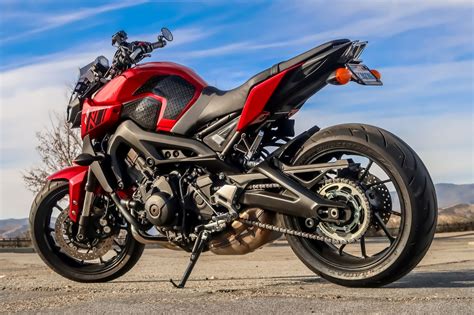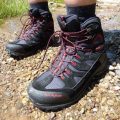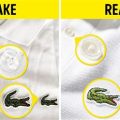Is My Premium Bike Authentic? A Comprehensive Guide to Spotting Fakes
Owning a premium bike is a dream for many cycling enthusiasts. It represents the pinnacle of engineering, performance, and craftsmanship. However, with the rising popularity of these high-end bikes, the market is unfortunately flooded with counterfeit products. This can leave you wondering if your premium bike is the real deal or a clever imitation. This comprehensive guide will equip you with the knowledge and tools to authenticate your bike and ensure you’re getting the quality and performance you deserve.
How Can I Tell if My Premium Bike is Authentic?
Authenticating a premium bike requires a keen eye for detail and a thorough examination of various components. It’s crucial to understand that counterfeiters are becoming increasingly sophisticated, making it challenging to differentiate genuine products from fakes. However, with a systematic approach and knowledge of key indicators, you can significantly increase your chances of identifying an authentic bike.
Here’s a step-by-step guide to help you determine if your premium bike is genuine:
- Check the Serial Number and Frame Number: Each premium bike has a unique serial number and frame number engraved or etched on the bike frame. These numbers are usually located on the bottom bracket area, chainstay, or head tube. Contact the bike manufacturer or authorized dealer to verify if the numbers match their records.
- Examine the Paint Job and Decals: Premium bikes often feature intricate paint jobs and decals that require high precision and craftsmanship. Inspect the paint for any imperfections, inconsistencies, or smudging. Verify the decals for accurate colors, placement, and alignment. Counterfeits often have blurry or faded colors, misaligned decals, and uneven paint application.
- Inspect the Components: Pay close attention to the components, including the drivetrain, brakes, wheels, and fork. Look for any discrepancies in branding, labeling, or quality. Counterfeit components may have mismatched logos, inferior materials, or poor craftsmanship.
- Check the Documentation: Ask for documentation, such as the original receipt, warranty card, or owner’s manual. These documents should have the manufacturer’s logo, bike model, serial number, and other identifying details. Counterfeit bikes often lack proper documentation or have incomplete information.
- Compare to Authentic Images and Videos: Consult official online resources, product brochures, or videos from the manufacturer to compare your bike to authentic models. Look for similarities in design, frame geometry, component placement, and branding details.
- Seek Expert Opinion: If you’re unsure about the authenticity of your bike, consult a reputable bike shop, certified mechanic, or an expert in bike authentication. They can assess your bike thoroughly and provide an informed opinion.
By carefully scrutinizing these aspects, you can significantly increase your chances of identifying a genuine premium bike.
Why Do People Sell Fake Bikes?
The demand for premium bikes, coupled with their high prices, has created a lucrative market for counterfeiters. They capitalize on the desire for high-quality products by producing replicas that appear authentic but lack the performance, durability, and reliability of genuine bikes.
Here are some reasons why people sell fake bikes:
- Profit: Counterfeiting is a profitable business, as counterfeiters can sell fake bikes at significantly lower prices than genuine ones, making substantial profits.
- Supply and Demand: The high demand for premium bikes, especially popular models, creates a market for counterfeiters to exploit.
- Lack of Regulation: Counterfeiting is often difficult to detect and prosecute, which encourages illegal activity.
- Availability of Materials: The proliferation of online marketplaces and readily available materials makes it easier for counterfeiters to source components and produce fake bikes.
The sale of counterfeit bikes can have serious consequences for consumers, as they may receive a product that is inferior in quality, unsafe to ride, or potentially harmful.
What are the Signs of a Fake Bike?
Identifying a fake bike requires a keen eye for detail and a thorough understanding of genuine premium bikes. While counterfeiters are becoming more sophisticated, there are still key indicators that can help you spot a fake.
Here are some common signs of a fake bike:
- Uneven or Faded Paint Job: Genuine bikes often have intricate paint jobs with consistent color and smooth application. Counterfeit bikes may have uneven paint, faded colors, or imperfections in the finish.
- Misaligned or Poor Quality Decals: Premium bikes have high-quality decals that are precisely placed and aligned. Counterfeit bikes may have misaligned decals, blurry printing, or faded colors.
- Inferior Components: Counterfeit bikes often use cheap or low-quality components, such as brakes, drivetrain, or wheels. Look for any discrepancies in branding, labeling, or material quality.
- Incorrect Branding or Logos: Counterfeit bikes may have mismatched logos, spelling errors, or inconsistencies in branding. Compare the logos to official images from the manufacturer.
- Lack of Documentation: Genuine bikes usually come with documentation, such as a warranty card, owner’s manual, or receipt. Counterfeit bikes may lack proper documentation or have incomplete information.
- Suspiciously Low Price: If a premium bike is being sold at a significantly lower price than the market value, it could be a counterfeit. Be cautious of deals that seem too good to be true.
By carefully inspecting these aspects, you can significantly increase your chances of identifying a fake bike.
What Happens If I Buy a Fake Bike?
Buying a fake bike can have serious consequences, ranging from financial losses to safety concerns. Here are some potential risks associated with purchasing a counterfeit bike:
- Financial Loss: Counterfeit bikes may not hold their value and could be significantly less expensive than genuine models. You may not be able to resell them for a reasonable price or recover your investment.
- Safety Risks: Counterfeit components may be made with inferior materials or manufacturing processes, leading to potential safety hazards. The bike may break down during use, causing accidents or injuries.
- Lack of Warranty or Support: Counterfeit bikes typically don’t come with a warranty or manufacturer support. If you encounter problems with the bike, you may be on your own to repair or replace it.
- Legal Issues: Purchasing counterfeit goods can be illegal in some countries. You may be subject to fines or legal repercussions if caught.
It’s crucial to prioritize authenticity and safety when buying a premium bike. Investing in a genuine product from a reputable source will ensure you get the quality, performance, and safety you deserve.
Where Can I Buy an Authentic Bike?
To ensure you’re buying an authentic premium bike, it’s essential to purchase from reputable sources. Here are some trusted places to buy an authentic bike:
- Authorized Dealers: Look for authorized dealers of the specific bike brand you’re interested in. They have direct partnerships with manufacturers and sell only genuine products.
- Bike Shops: Reputable bike shops often carry a wide selection of premium bikes from various brands. They are knowledgeable about bike authentication and can provide valuable advice.
- Manufacturer Websites: Many manufacturers offer direct sales through their websites, ensuring the authenticity of their products.
- Online Marketplaces with Buyer Protection: Reputable online marketplaces with buyer protection programs, such as eBay or Amazon, can provide a degree of security when purchasing a bike. However, it’s crucial to verify seller reviews and authenticity before making a purchase.
Always be cautious of deals that seem too good to be true. Remember, if the price is significantly lower than market value, there’s a high chance the bike may be counterfeit.
How Can I Verify the Authenticity of a Bike Frame?
The bike frame is the foundation of any bike, and its authenticity is crucial for ensuring performance, durability, and safety. Here are some key aspects to verify the authenticity of a bike frame:
- Serial Number and Frame Number: Every genuine bike frame has a unique serial number and frame number etched or engraved on the frame. Contact the manufacturer or authorized dealer to verify if the numbers match their records.
- Material and Construction: Premium bikes often use high-quality materials like carbon fiber, titanium, or aluminum alloys. Examine the frame for any inconsistencies in material, welds, or construction quality.
- Branding and Logos: Look for the manufacturer’s branding and logos on the frame, head tube, or other areas. Verify the accuracy and placement of these markings.
- Geometry and Design: Premium bikes often have specific frame geometries and designs that contribute to performance and handling. Compare the frame to official images or specifications from the manufacturer.
- Weight and Finish: Carbon fiber frames are typically lighter than aluminum frames, while titanium frames have a distinctive color and finish. Check the frame’s weight and finish to verify its authenticity.
If you’re unsure about the authenticity of a bike frame, it’s best to consult a reputable bike shop, certified mechanic, or an expert in bike authentication for an expert opinion.
What are the Best Places to Buy a Premium Bike?
Buying a premium bike is a significant investment, so choosing a reputable source is crucial for ensuring authenticity and quality. Here are some of the best places to buy a premium bike:
- Specialized Bike Shops: Reputable bike shops often have a wide selection of premium bikes from various brands, along with knowledgeable staff who can guide you through the process. They typically offer warranties and service options.
- Authorized Dealers: Look for authorized dealers of the specific bike brand you’re interested in. They have direct partnerships with manufacturers and sell only genuine products.
- Manufacturer Websites: Many manufacturers offer direct sales through their websites, ensuring the authenticity of their products. They often provide exclusive deals or promotions.
- Online Marketplaces: Reputable online marketplaces, such as eBay or Amazon, can offer a wide selection of bikes, but it’s important to verify seller reviews, authenticity, and buyer protection before making a purchase.
Remember to compare prices, research seller reviews, and consider the bike’s warranty and service options before making a purchase.
What Are Some Examples of Fake Premium Bikes?
Counterfeiters often target popular and high-demand premium bike brands. Some examples of counterfeit premium bikes include:
- Specialized S-Works: Specialized S-Works bikes are highly sought after for their performance and technology. Counterfeiters produce replicas of these bikes, often with inferior components and construction.
- Trek Madone: Trek Madone bikes are known for their lightweight frames and aerodynamic designs. Counterfeits often use cheaper materials and construction, resulting in a compromise in quality and safety.
- Cervelo R5: Cervelo R5 bikes are renowned for their aero performance and frame stiffness. Counterfeiters produce replicas with similar designs but often with inferior components and materials.
- Pinarello Dogma: Pinarello Dogma bikes are recognized for their distinctive design and top-tier performance. Counterfeits can be difficult to identify, but careful examination can reveal inconsistencies in branding, components, and construction.
Be vigilant when purchasing a premium bike, and always verify the authenticity of the bike and its components before making a purchase.
Table Summarizing Information
| Category | Key Aspects to Verify | Signs of a Fake |
|---|---|---|
| Serial Number and Frame Number | Check if the numbers match manufacturer records. | Missing, incorrect, or inconsistent serial numbers. |
| Paint Job and Decals | Examine for inconsistencies, imperfections, or poor quality. | Uneven, faded, or smudged paint. Misaligned or blurry decals. |
| Components | Inspect for discrepancies in branding, labeling, or quality. | Mismatched logos, inferior materials, or poor craftsmanship. |
| Documentation | Verify the presence of original receipt, warranty card, or owner’s manual. | Missing or incomplete documentation. |
| Price | Be cautious of prices significantly lower than market value. | Suspiciously low price compared to genuine models. |
| Seller Reputation | Purchase from reputable sources with positive reviews. | Unknown or untrustworthy sellers. |
Frequently Asked Questions
Is My Premium Bike Worth More if It Is Authentic?
Yes, an authentic premium bike is typically worth more than a counterfeit. Genuine bikes are made with high-quality materials and craftsmanship, which contributes to their performance, durability, and value. Counterfeit bikes often use inferior materials and construction, resulting in a lower quality and resale value.
Can I Return a Fake Bike If I Bought It Online?
Returning a fake bike can be challenging, especially if you purchased it from an untrustworthy seller or an online marketplace without buyer protection. It’s essential to carefully research the seller, check for buyer protection programs, and document the purchase process to have some recourse if you encounter a fake bike.
How Can I Tell If My Bike Is a Replica or a Fake?
A replica bike is a copy of an original model, often with slight modifications or changes to the design. While replicas may be legal, they are not necessarily the same quality as the original. A fake bike, on the other hand, is an illegal counterfeit designed to deceive customers into thinking it’s a genuine product. It’s important to distinguish between replicas and fakes to avoid purchasing a counterfeit bike.
What Are Some Tips for Avoiding Fake Bikes?
Here are some tips for avoiding fake bikes:
- Buy from reputable sources: Purchase bikes from authorized dealers, bike shops, or the manufacturer’s website.
- Research the seller: Check online reviews, ratings, and feedback before buying from an individual or online marketplace.
- Verify authenticity: Examine the bike carefully, check for serial numbers, inspect components, and compare it to official images or descriptions.
- Be wary of deals that seem too good to be true: If a premium bike is priced significantly lower than market value, it’s likely a counterfeit.
Is There a Way to Report Fake Bikes for Sale?
Yes, you can report fake bikes for sale to the relevant authorities. Contact your local law enforcement agency, the manufacturer of the bike, or online marketplaces where the fake bike is being sold. Provide details about the seller, the fake bike, and any supporting evidence.
What Should I Do If I Suspect That My Bike Is Fake?
If you suspect that your bike is fake, it’s best to consult a reputable bike shop, certified mechanic, or an expert in bike authentication. They can assess your bike thoroughly and provide an informed opinion. If the bike is confirmed to be a counterfeit, you may have recourse through the seller or the online marketplace where you purchased it.
What Are the Best Brands of Premium Bikes?
There are many excellent brands of premium bikes available, each with its unique strengths and features. Some of the most reputable brands include:
- Specialized
- Trek
- Cervelo
- Pinarello
- Colnago
- Cannondale
- Giant
The best brand for you will depend on your individual needs, riding style, and budget.



